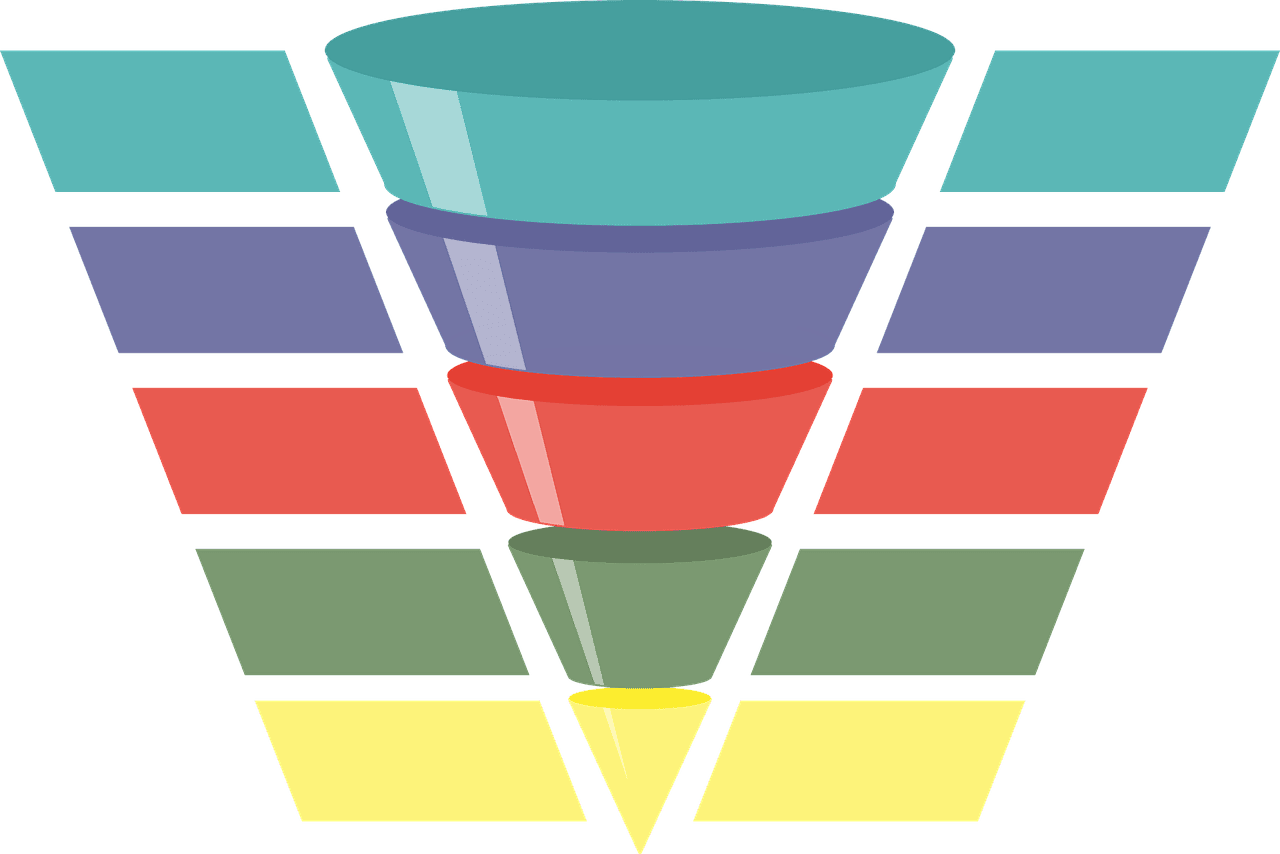Need help generating leads? Read on to learn more about the importance of keeping your business funnel flowing with a constant stream of leads.
Maximising your conversion funnel requires constant tinkering to determine what works for your business and what doesn’t. It requires you to experiment with each element of the customer interaction process by analysing how customers respond to certain cue’s via the use of analytic tools such as google analytics.
What is a conversion funnel?
A conversion funnel is a tool used to visualise and understand the flow through which potential customers land on your site and then take a desired action. This process is described as a funnel because you are guiding the customer toward your conversion point.

Where to start?
The first thing you need to do is to ensure that your company has a google analytics account set up which can be used to monitor all of your website traffic.
If you don’t have this set up, stop right now and go set it up. The data you will collect will reveal where your users are exiting the conversion funnel. This allows you to identify the areas of your online presence which need improvement.

Setting up the funnel
Next you need to create a funnel on Google Analytics. This is achieved by setting up a goal for your online activities. The three main types of Google Analytics goals are;
- Destination Goals: These allow you to track when users reach a particular page on your website eg the checkout page on an eCommerce website.
- Engagement Goals: These allow you to track user activity on your website such as the amount of time visitors spend on your website and on particular pages, how many pages they view and what actions they take.
- Content Goals: These measure when users sign up to receive content such as a weekly newsletter or engage with the brand community.
Analyse Your Landing Pages
Once you have the funnel set up and you’ve started collecting data on the pages in your funnel, you should start altering different parts of your website to see how you can best increase conversions. Some methods which should be employed to increase the attractiveness of your landing pages include;
To learn more about how to optimise your digital presence CLICK HERE
Clear Headlines
Headlines that address what is specifically related to your page’s content will attract the attention of the right type of reader, while vague headlines cause higher bounce rates.
Testimonials and Endorsements
One of the best ways to boost conversions on your website is through social proof. There are a number of different social proof tactics that you can use on your landing pages to boost conversions, such as;
- Testimonials
- Endorsements
- Customer Logo’s
- Accreditations
Strong Calls-to-Action (CTA’s)
There should be a clear pathway through your website. It should be obvious to users what you want them to do next at every stage of the funnel.
Limiting the number of links
By limiting the number of options that users have on your landing page, you can increase the probability that they will continue along the funnel. This serves the dual purpose of ensuring that users make the right decision for your business while also making it easier for users to navigate their way through the funnel.
To learn more about analytics and how it can benefit your company CLICK HERE
Holding the Reader’s Attention
According to CrazyEgg, the biggest factor that marketers grapple with is creating engaging content that holds the readers limited attention and using it to drive conversion. The average reader only has an attention span of about 8 seconds when browsing online. Therefore, the various elements of your site and the content you choose to use must work in tandem to create an enjoyable user experience that never lets the reader’s attention drift.
The Introduction
You only have a few seconds to capture someone’s attention, so it is important that you don’t take chances with insider language or visuals which may be lost on people who don’t have an intimate knowledge of the industry you operate in, unless appropriate for narrow niche marketing. These tactics only tend to confuse audiences, if only for a few seconds, which is all it takes to lose them. A confused mind does not pay attention.
A Strong Follow Up
Readers don’t read content, instead they skim it. Therefore, it is vital that you make sure your follow up punch, the actual information for which you grabbed their attention in the first place, is worth the readers time.
Add Visual Impact
When the term visual impact is used, people immediately think of just images. While this is an important factor, how the content you write is displayed is presented is of even more importance.
Readers make an instant decision whether they will continue reading a page or not so it is vital that your website content is structured in such a way so as to make reading your content visually appealing.
 Important tips to note to make your text more appealing include;
Important tips to note to make your text more appealing include;
- Using short paragraphs for ease of reading, especially in the introduction.
- Show the bones of your post by using subheads and bolded or italicized text.
- Use bullet points to put your information across.
- Use white space (i.e. use space on the page that has neither text nor images) to make a text more digestible.
- Use images to break up your text.
The Call-to-Action
Every page needs to have defined CTA’s to guide the user. If you have managed to keep your reader’s attention, this is where you get the chance to move them deeper into your conversion funnel. Effective CTA’s should provide the reader with clear instructions as to what they should do next.
 After the Sale
After the Sale
Most marketers focus on acquiring customers but fail to focus on user retention and referrals. This can prove to be a huge mistake because referrals can drive massive profits at low cost.
If you provide an amazing experience to an existing customer, they’ll turn into your biggest advocates and bring you new customers at a fraction of the cost you’d normally spend to convert prospects.

About the Author
Mark O’Connell is a digital expert working at Digital Strategy Consultants. He has a passion for strategy and for assisting organizations achieve their online goals through best practice techniques and priming them to drive competitive advantage through early adoption of emerging digital technologies. Mark holds a LL.B (BS) (Hons) in Law & Business (TCD), MSc in Data Intelligence (Fordham University, New York) and a MSc in Marketing Strategy (Antwerp Management School). His current research interests are in the field of analytics and strategy and how these disciplines can be used to drive competitive advantage.





 After the Sale
After the Sale 



Recent Comments